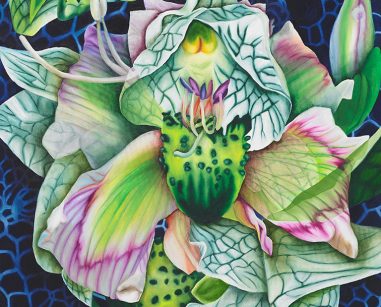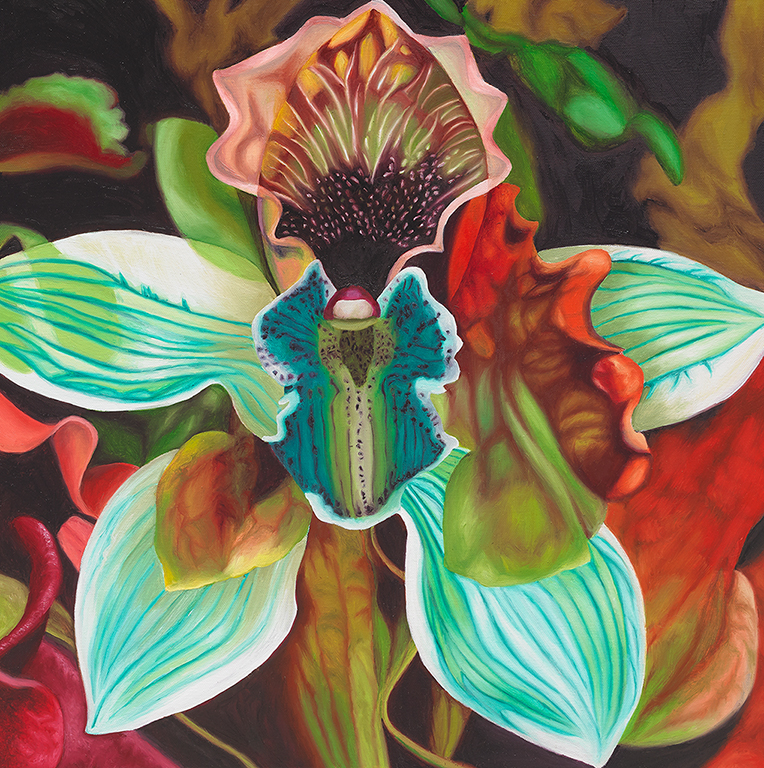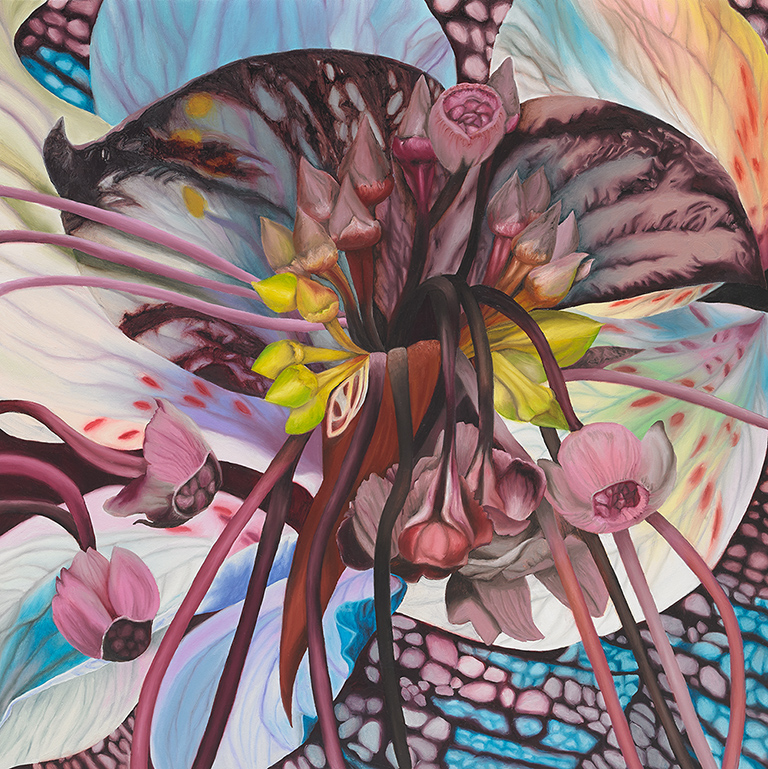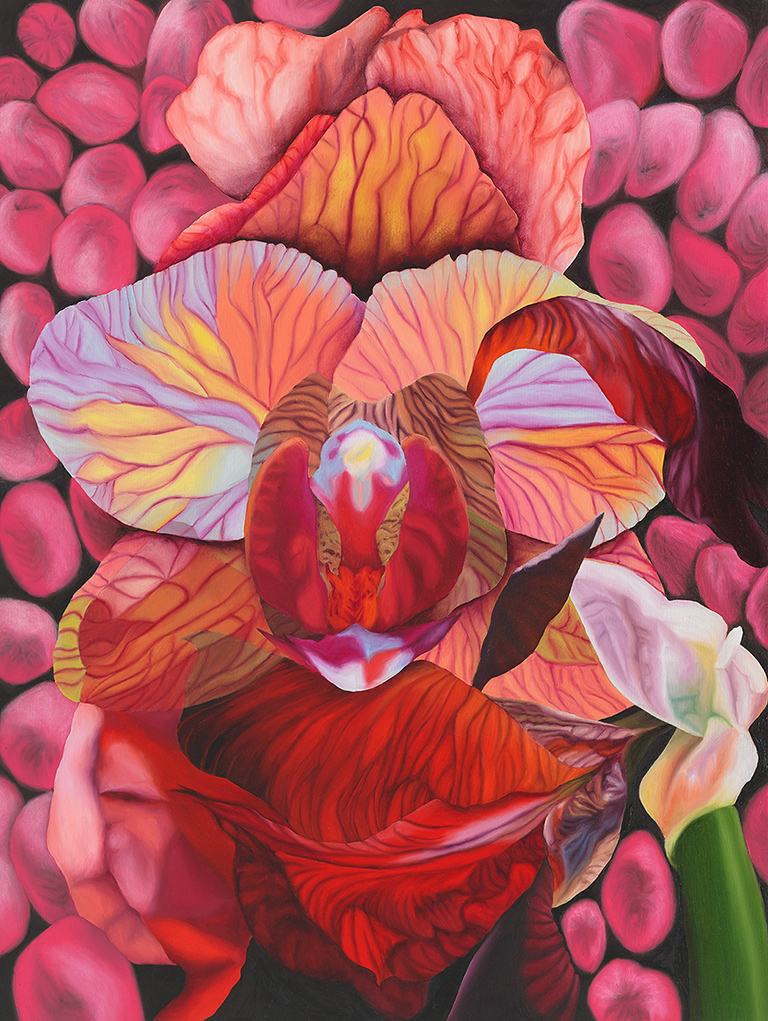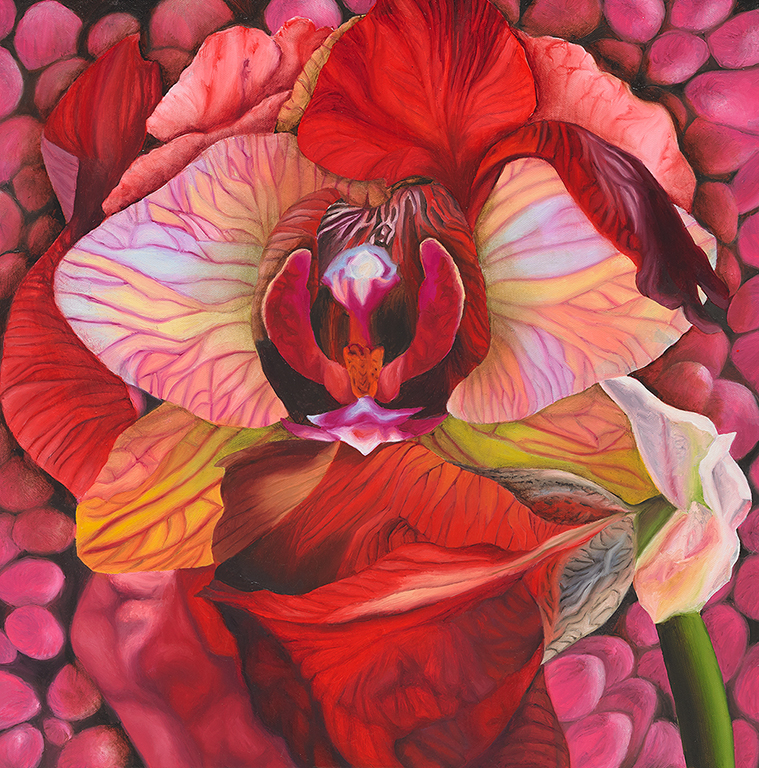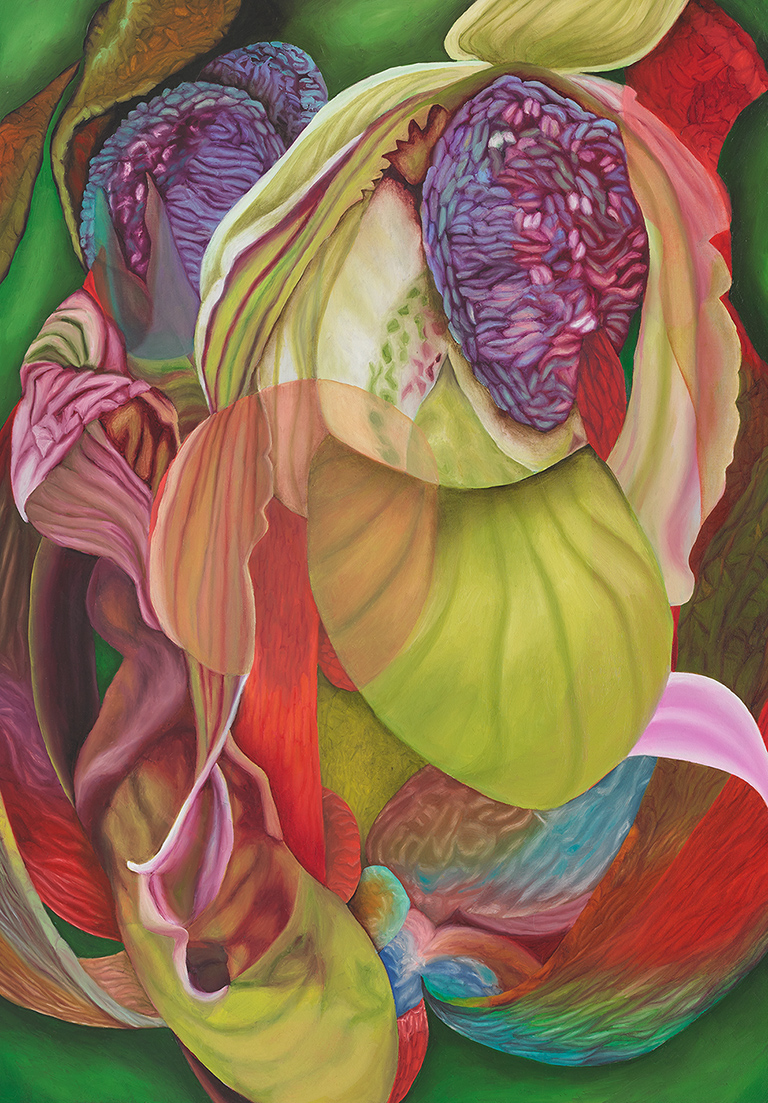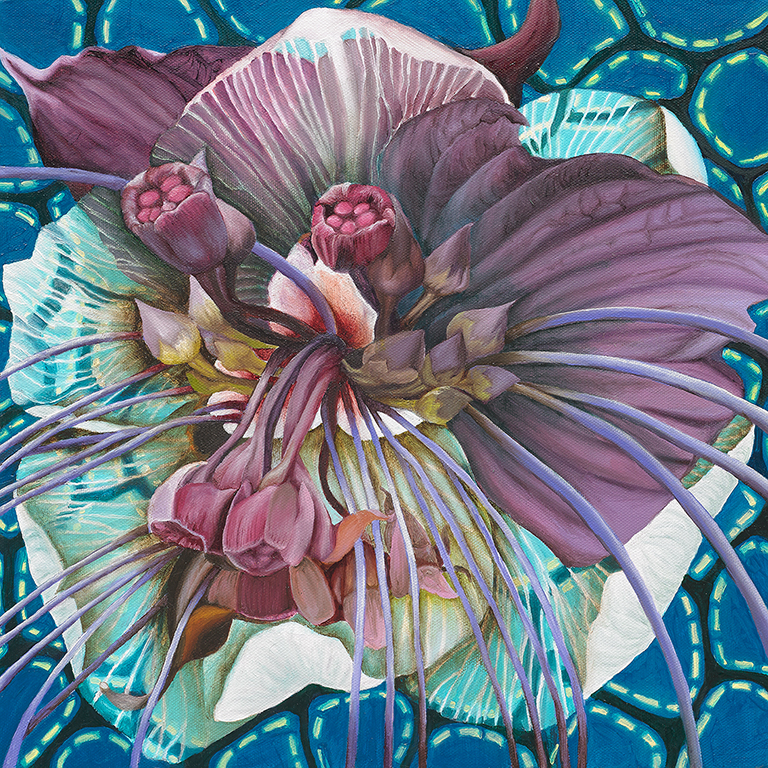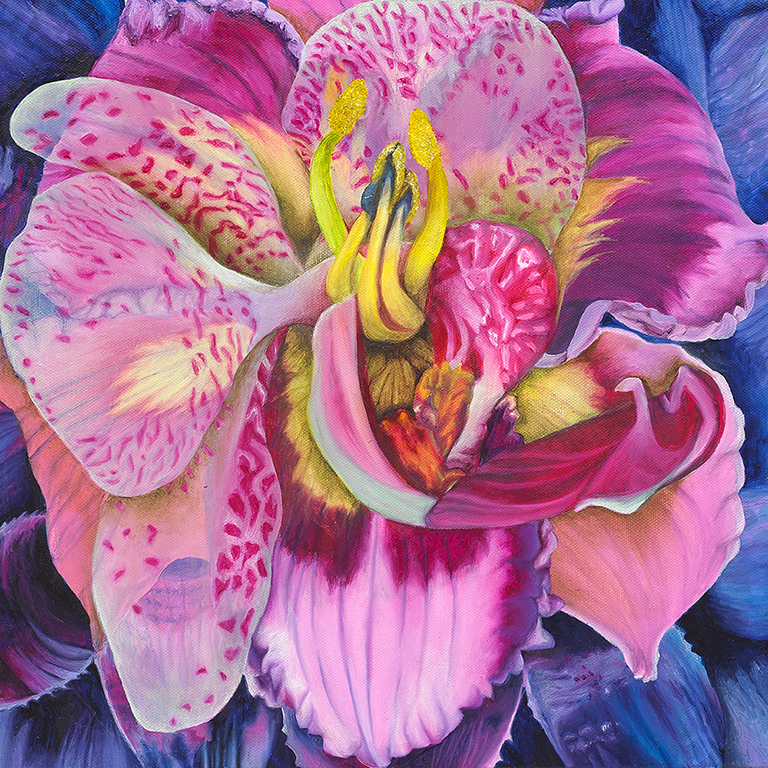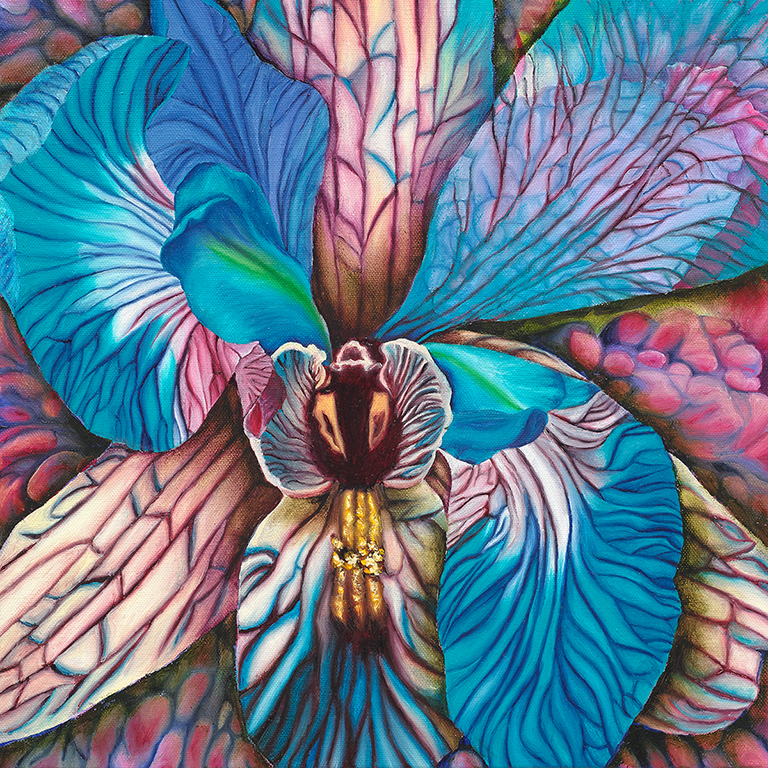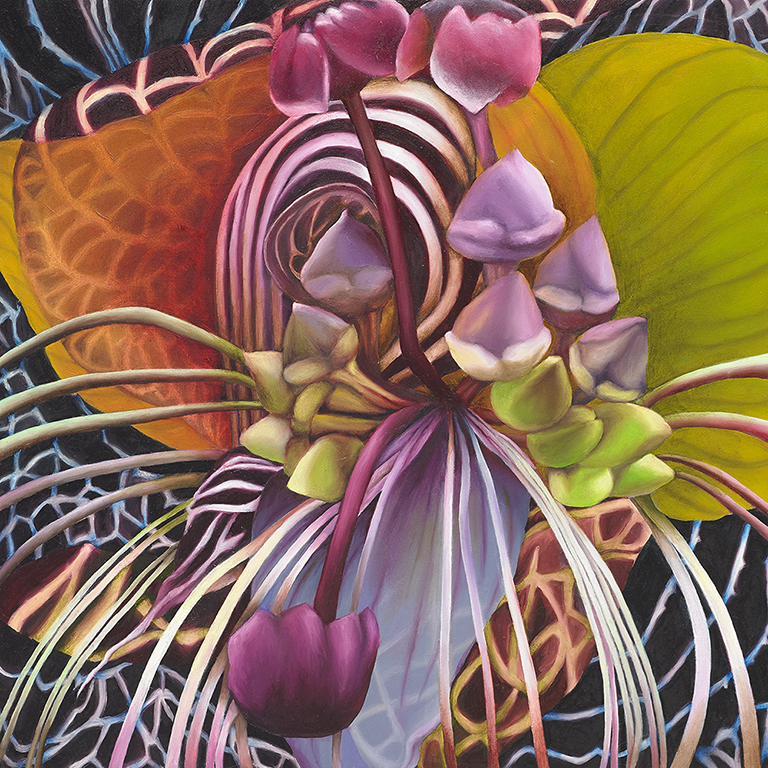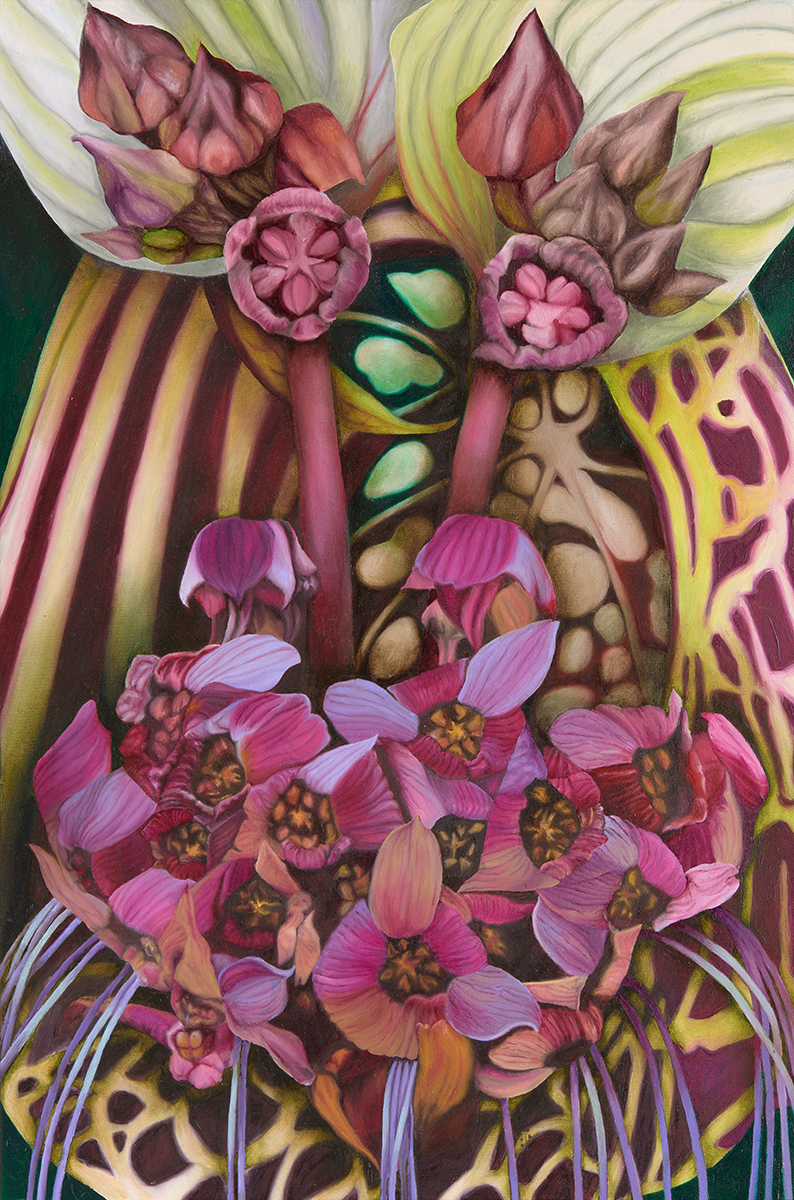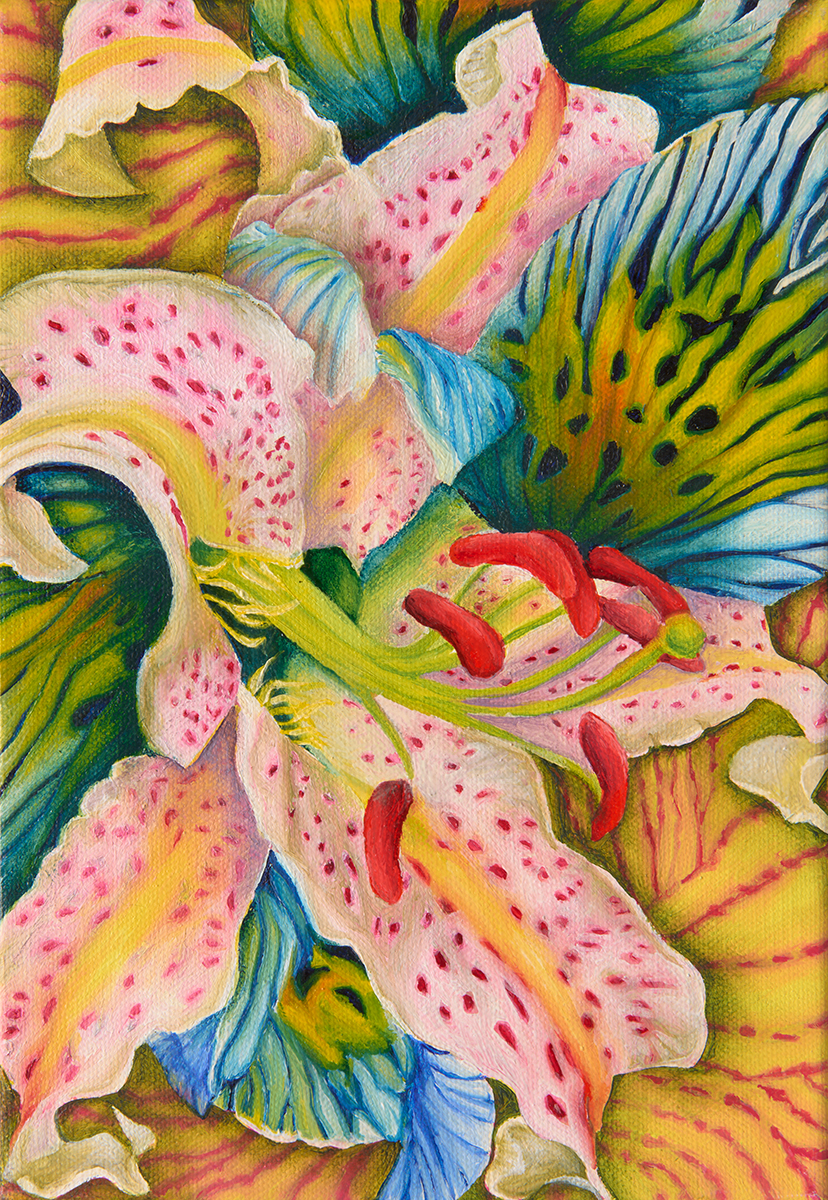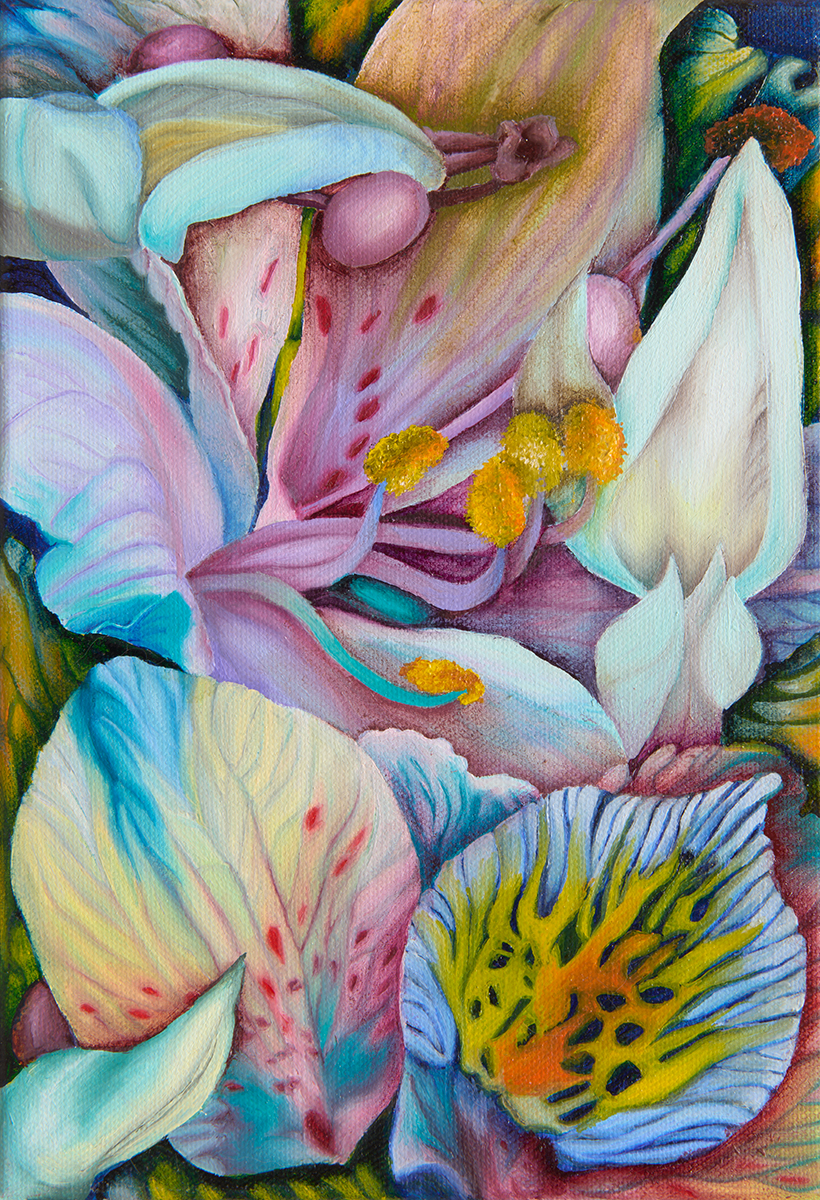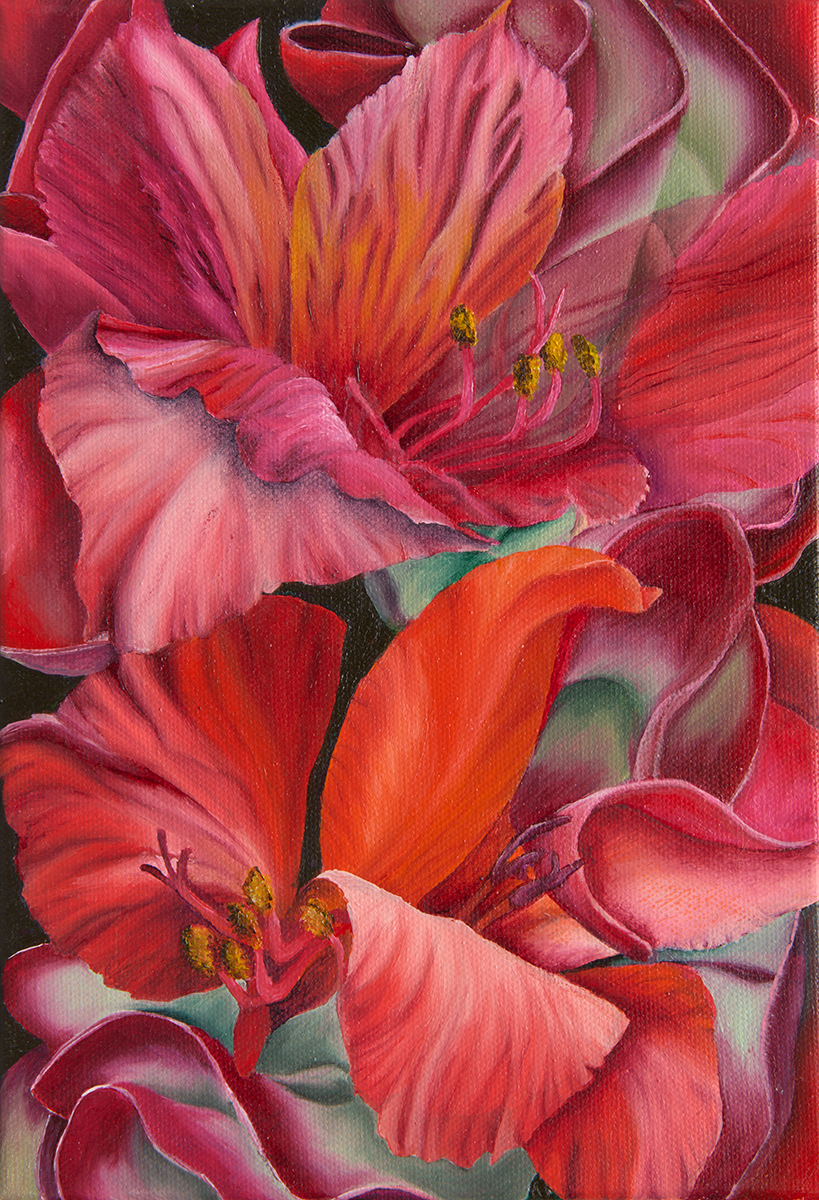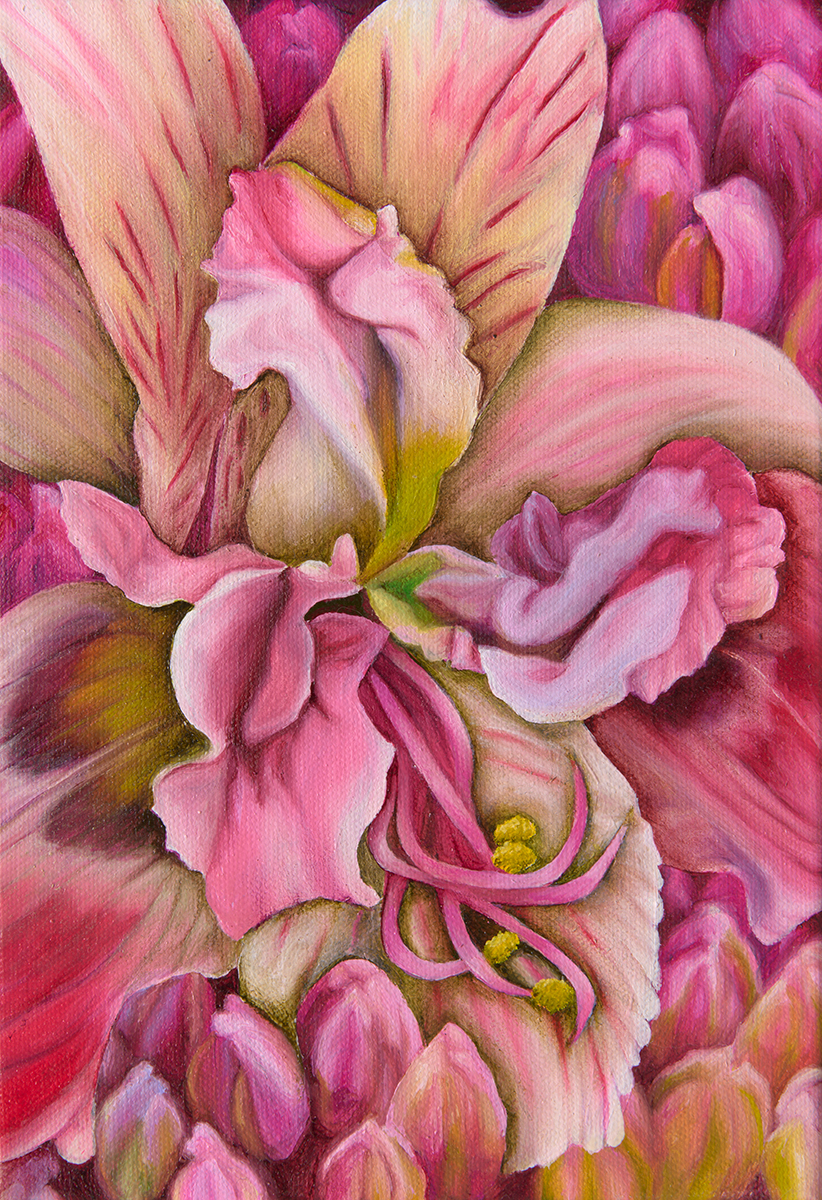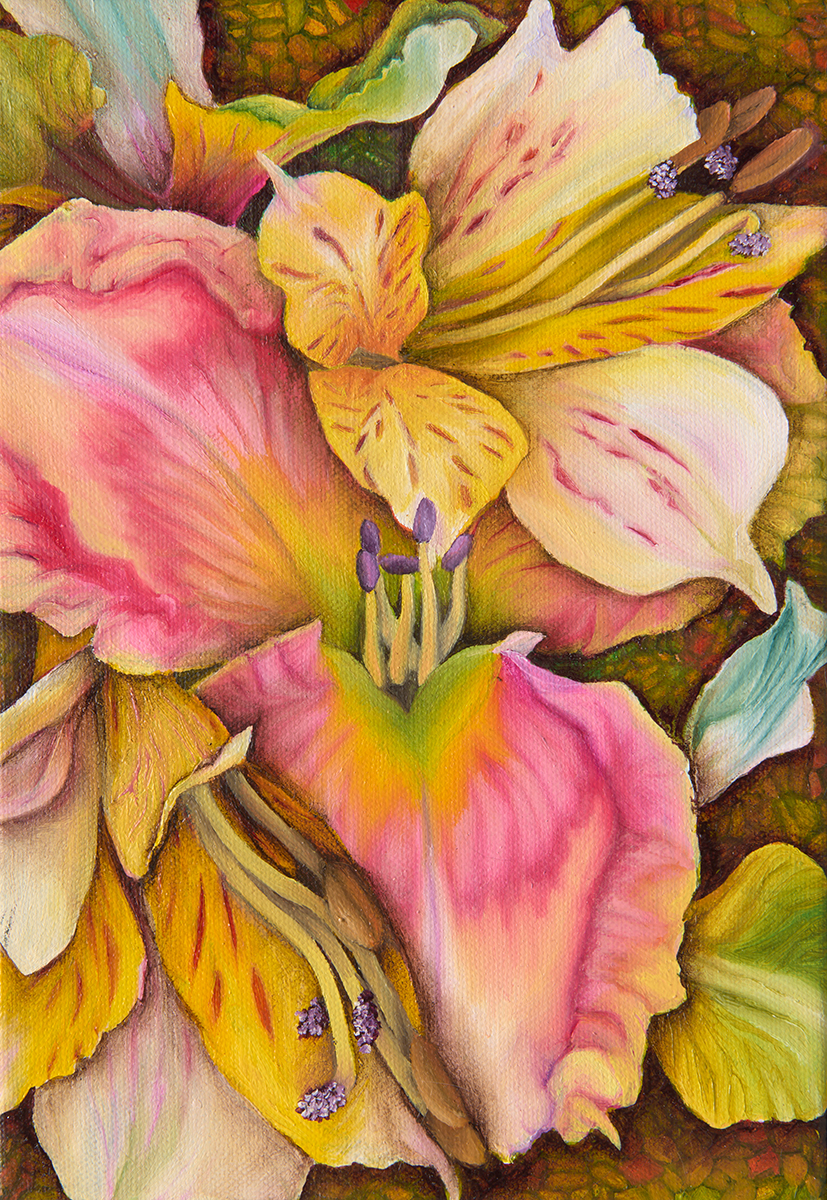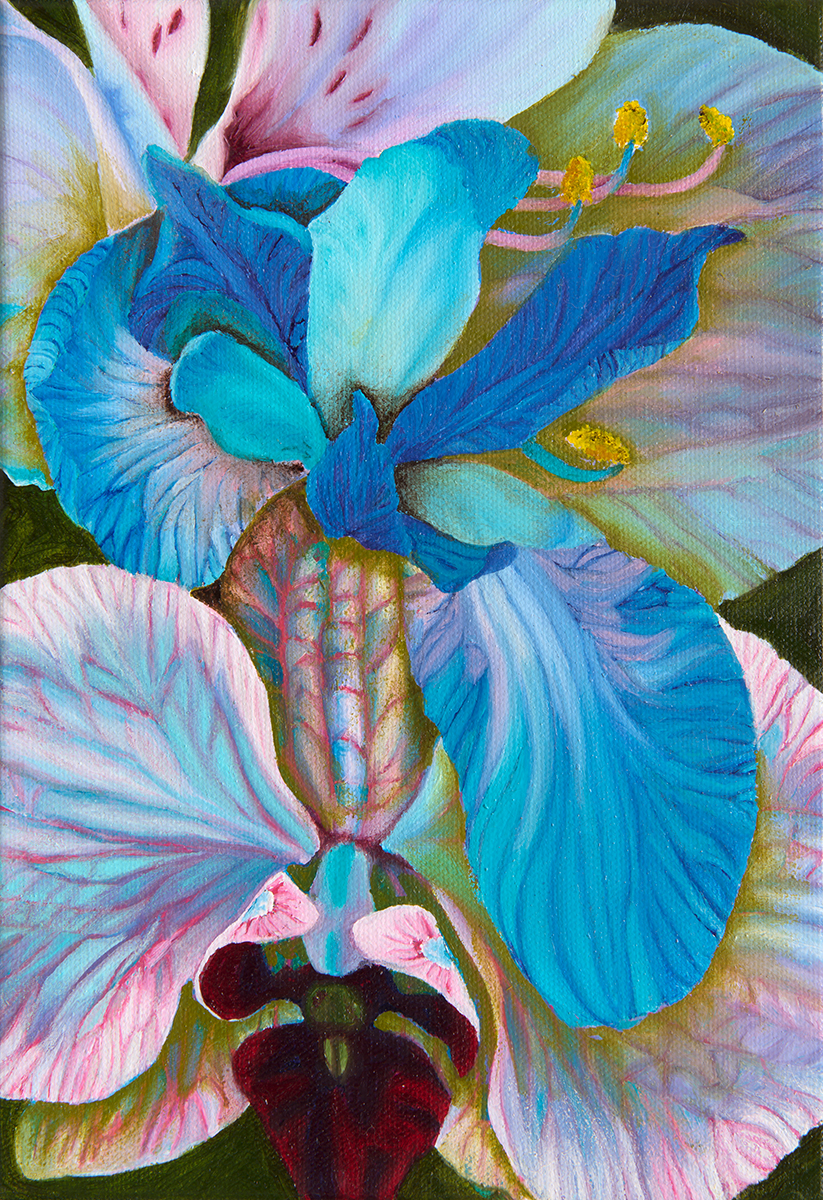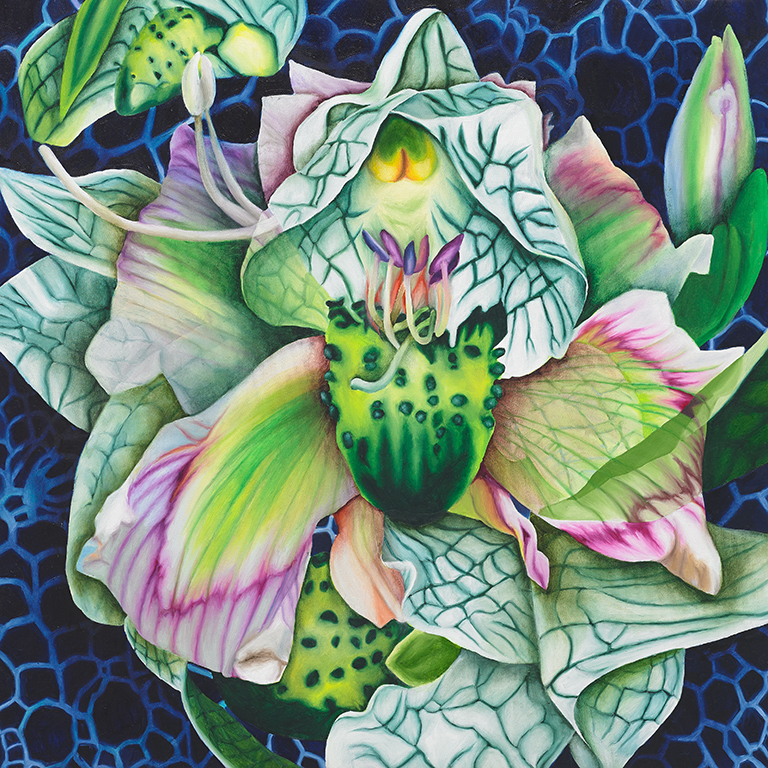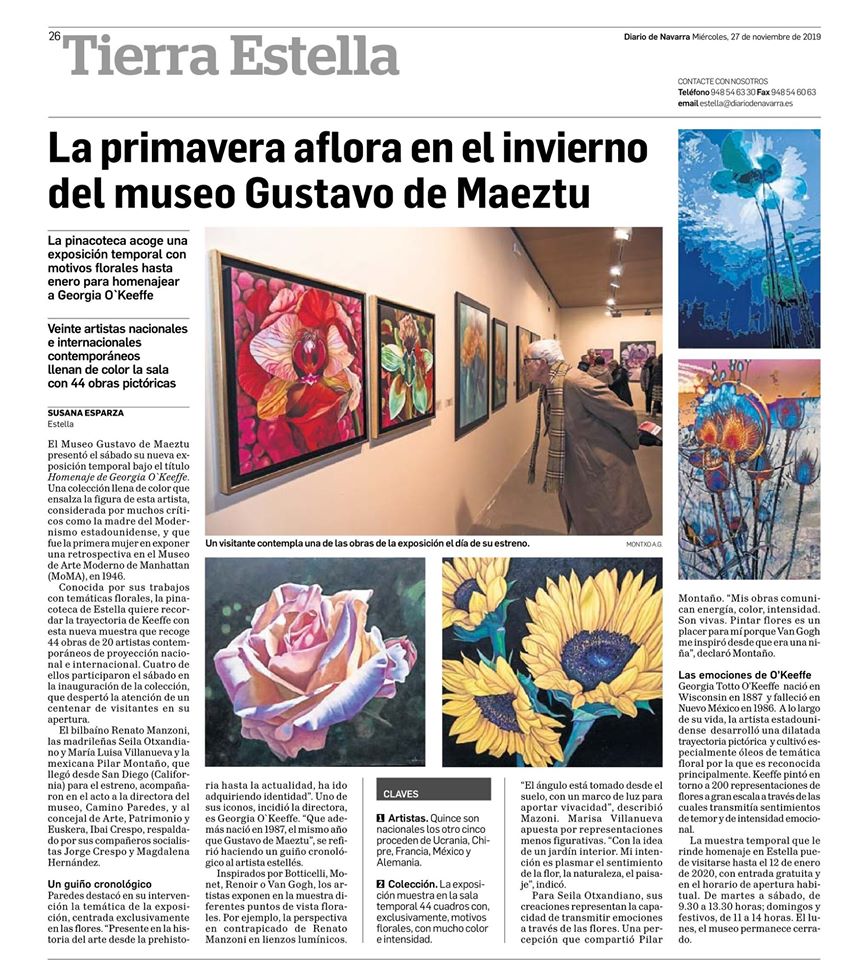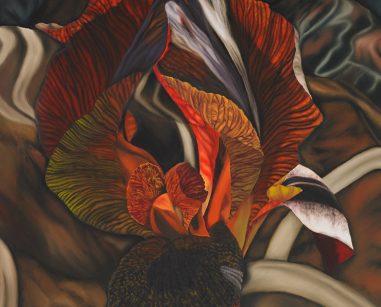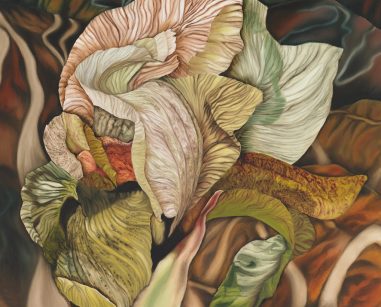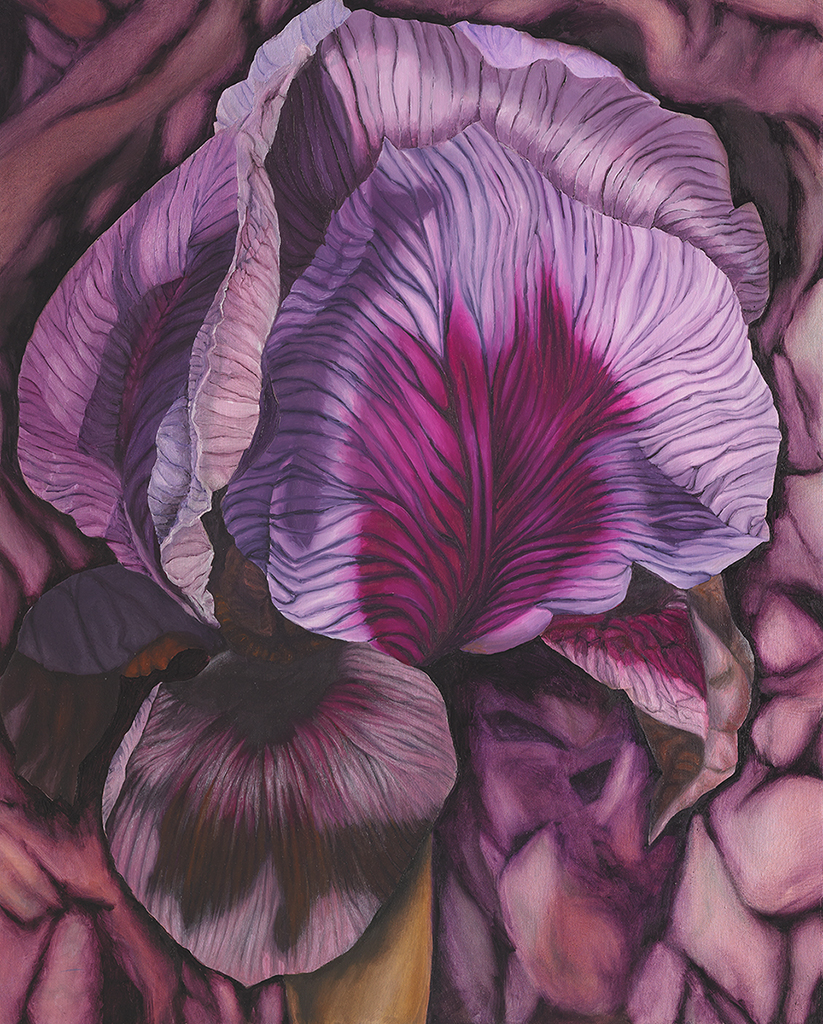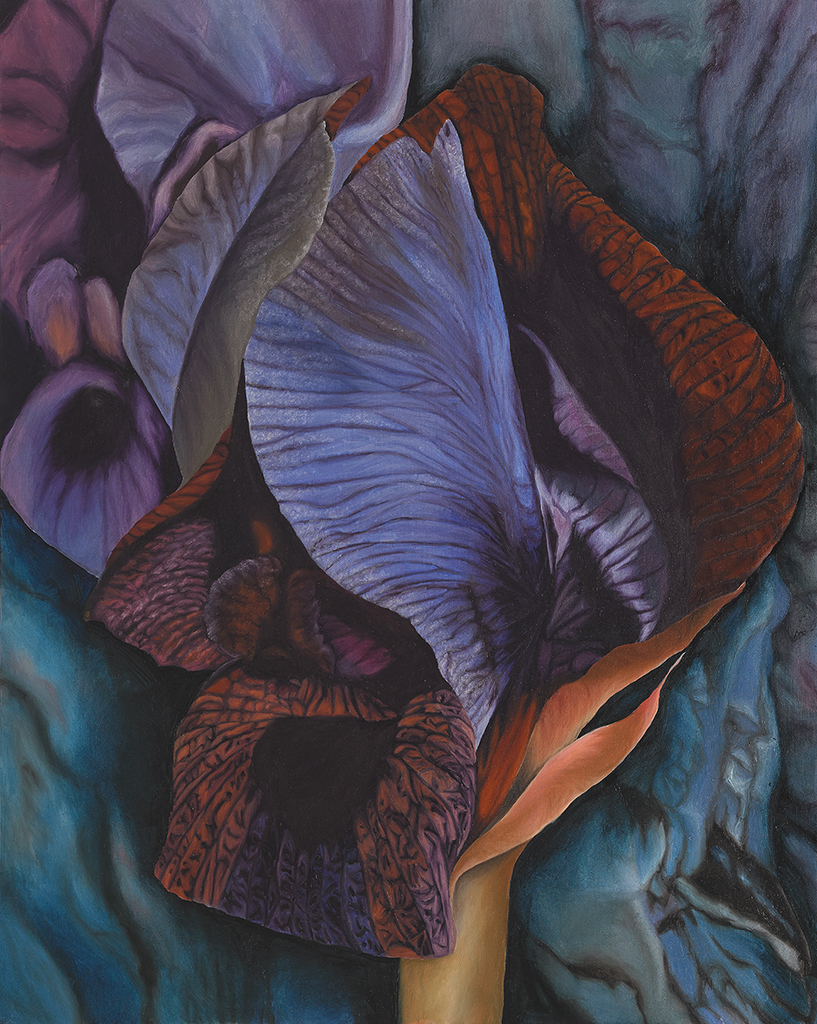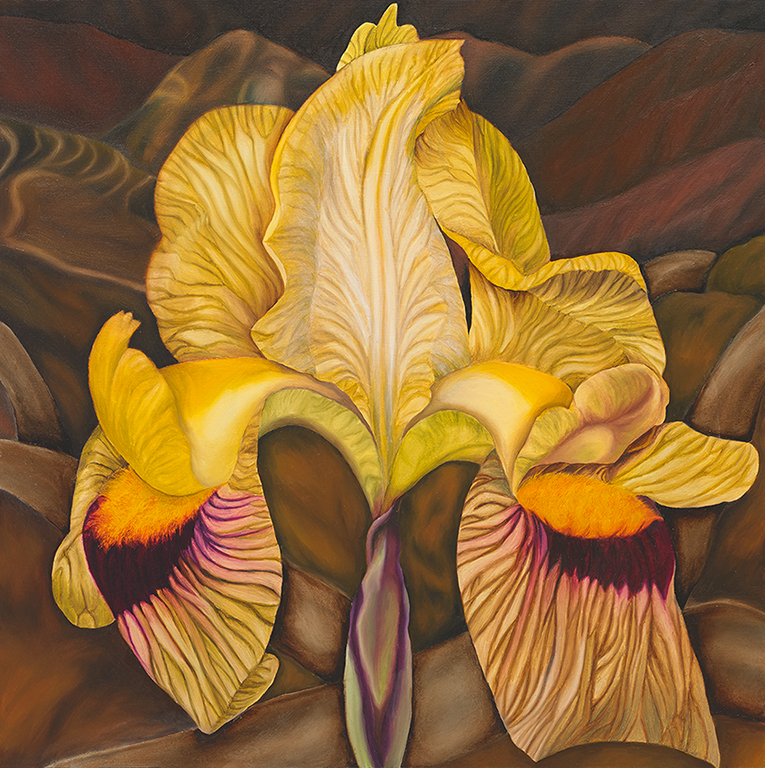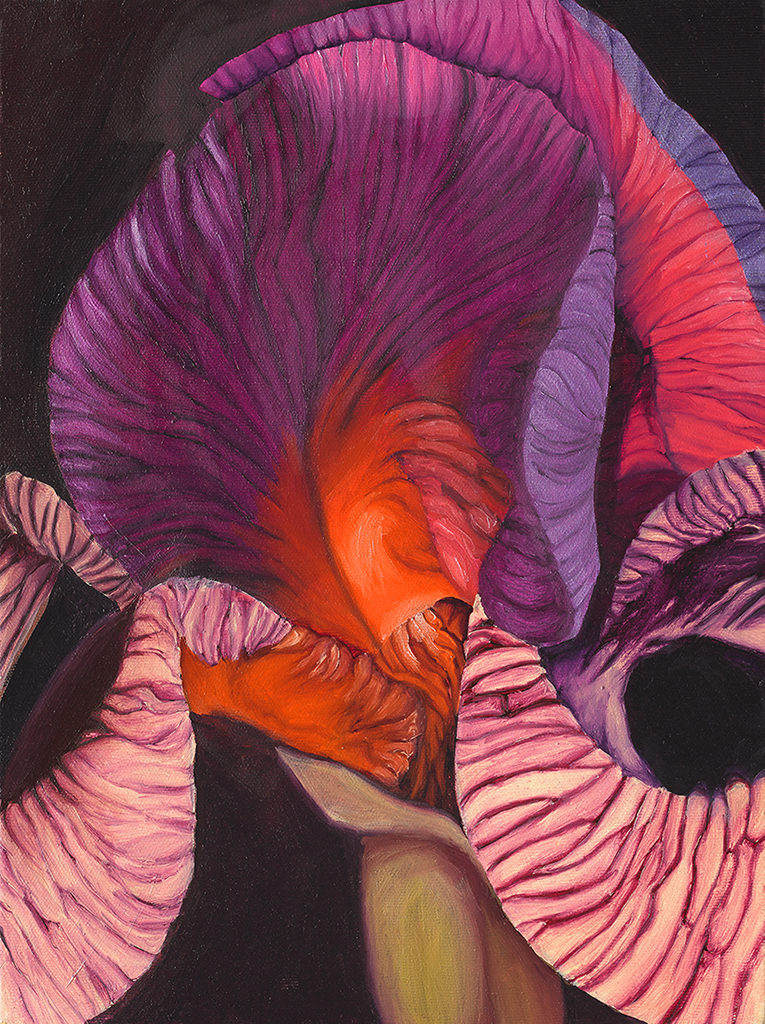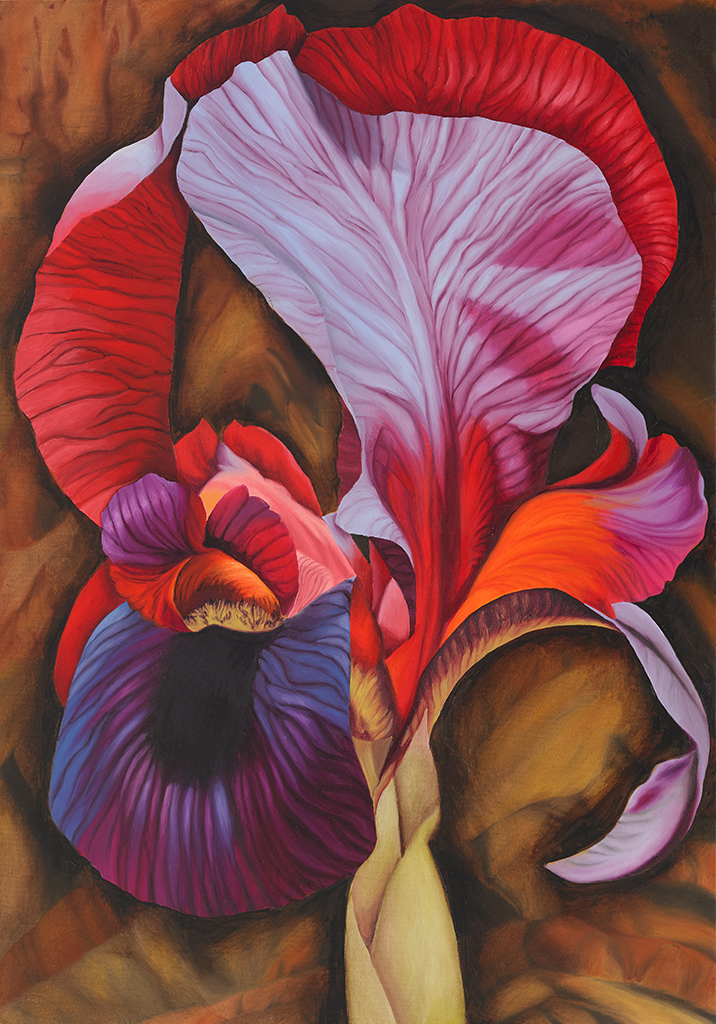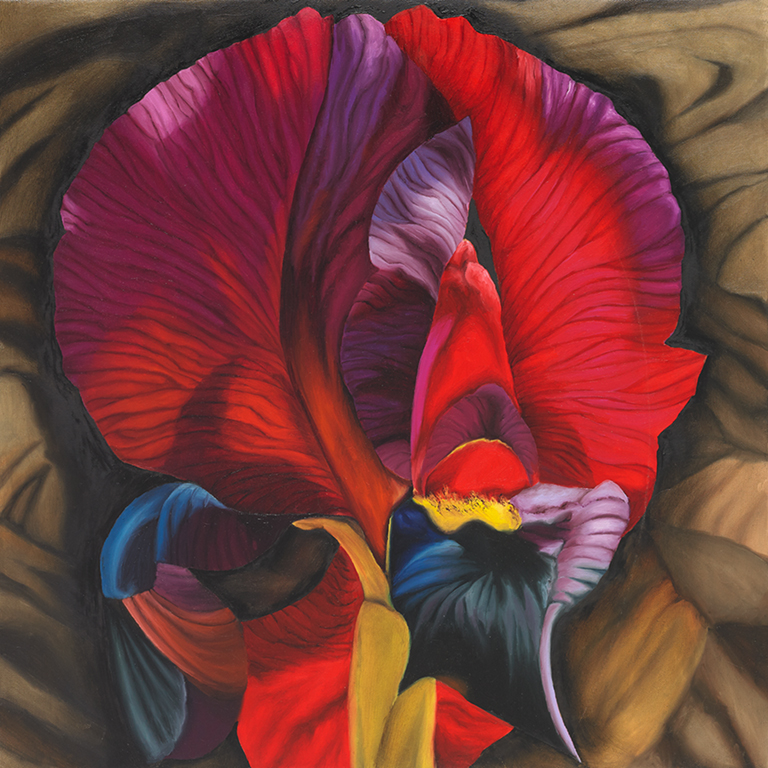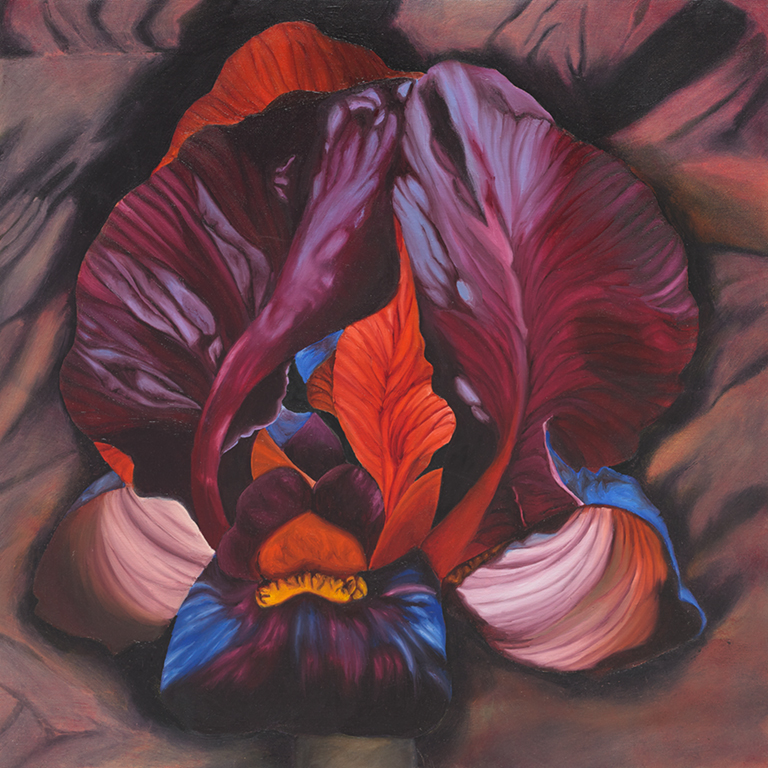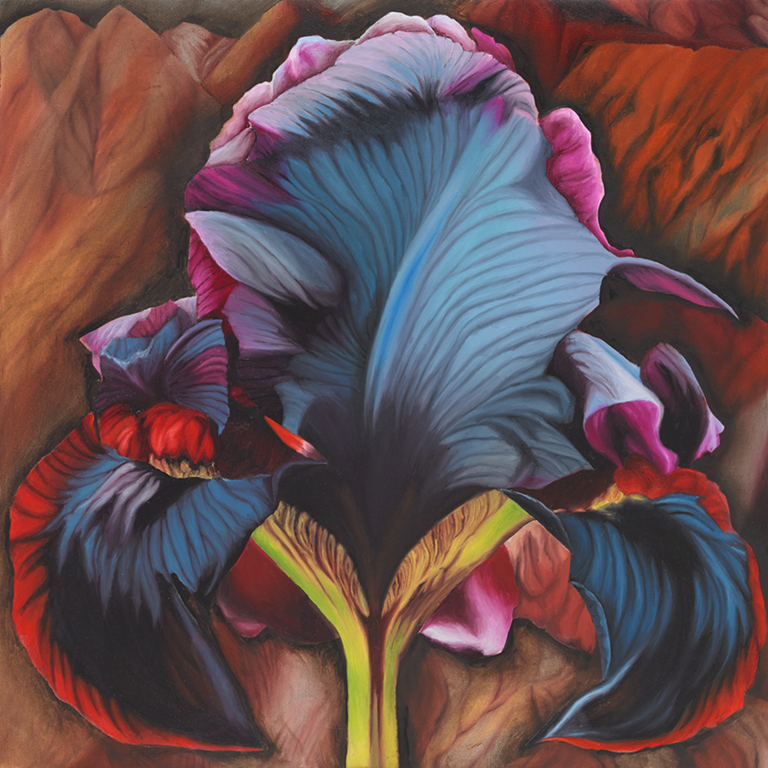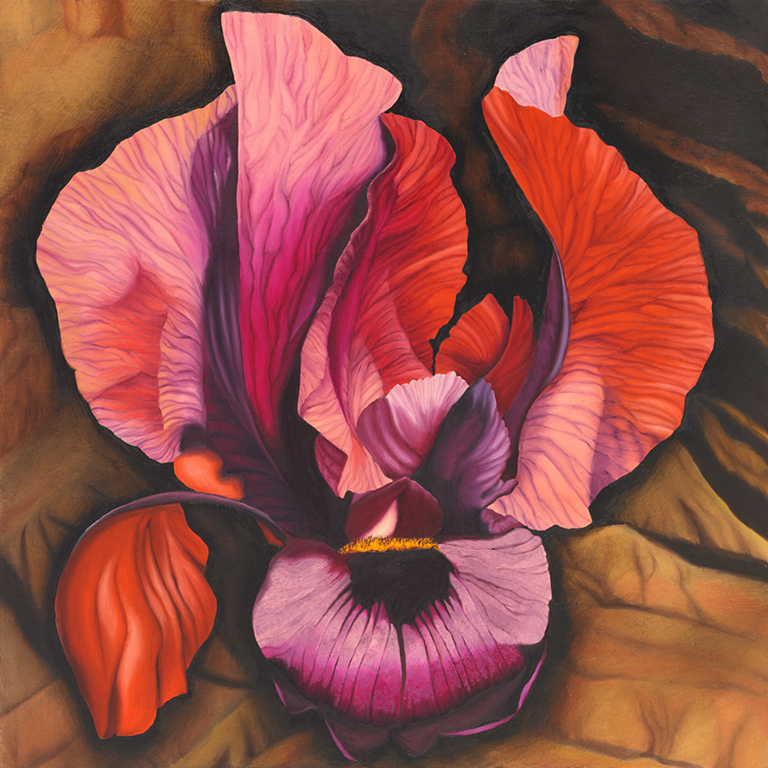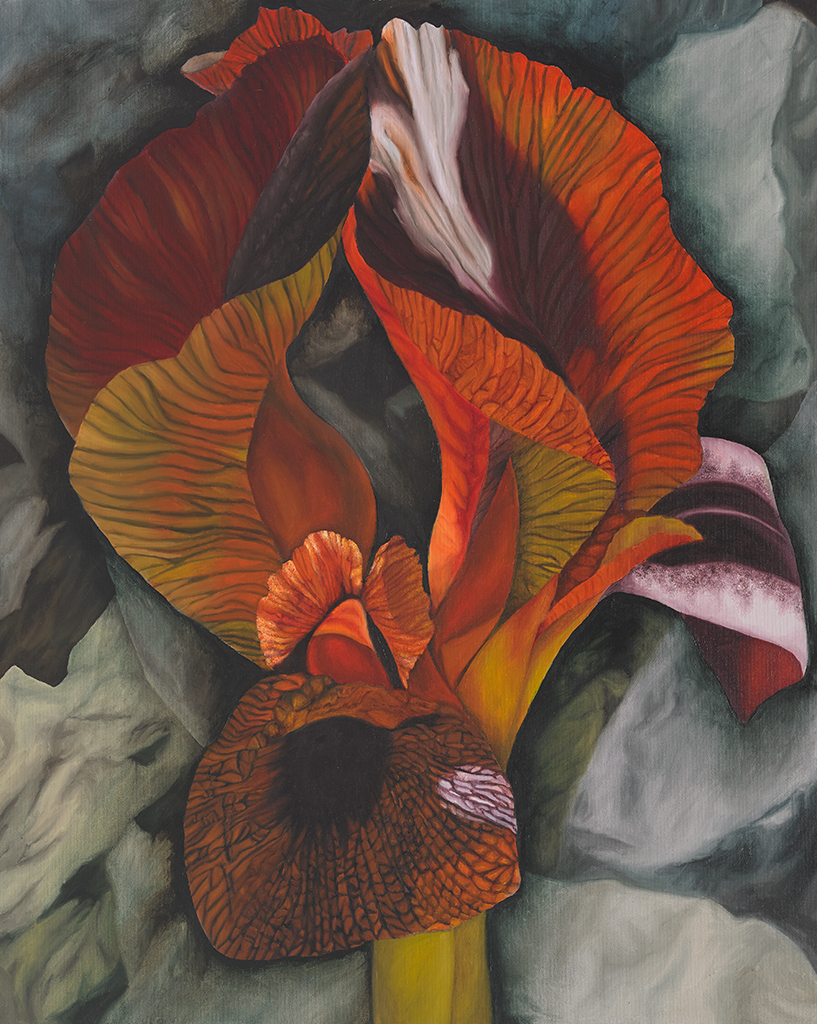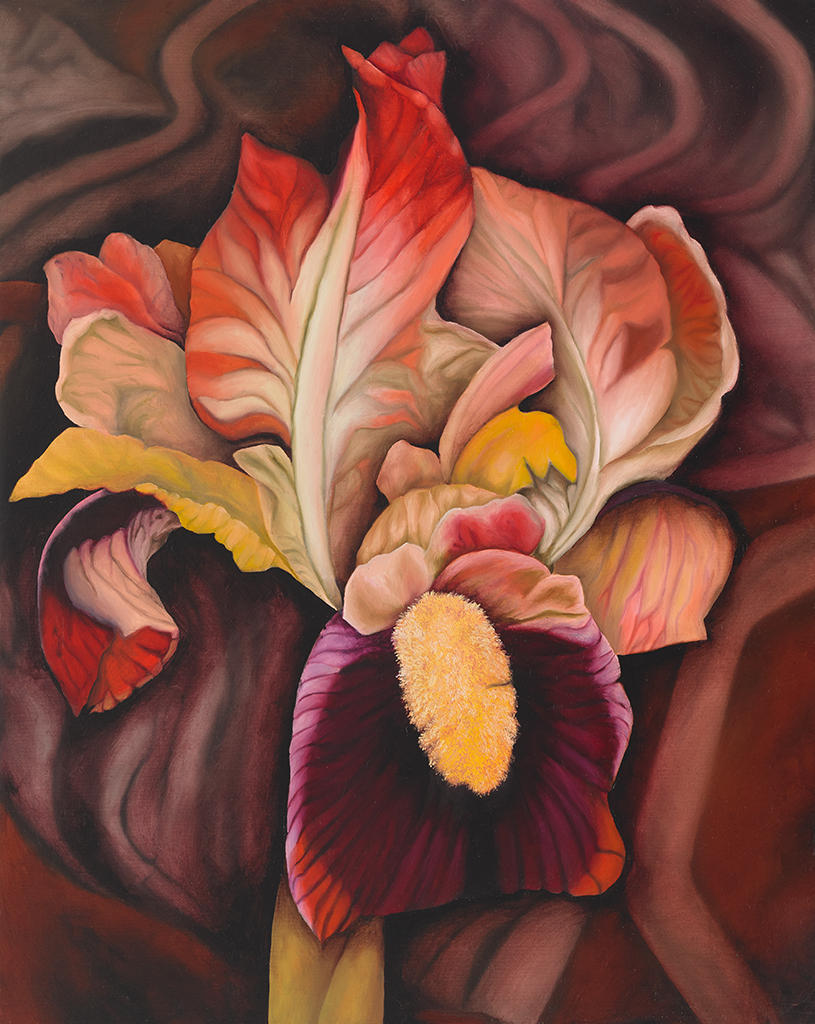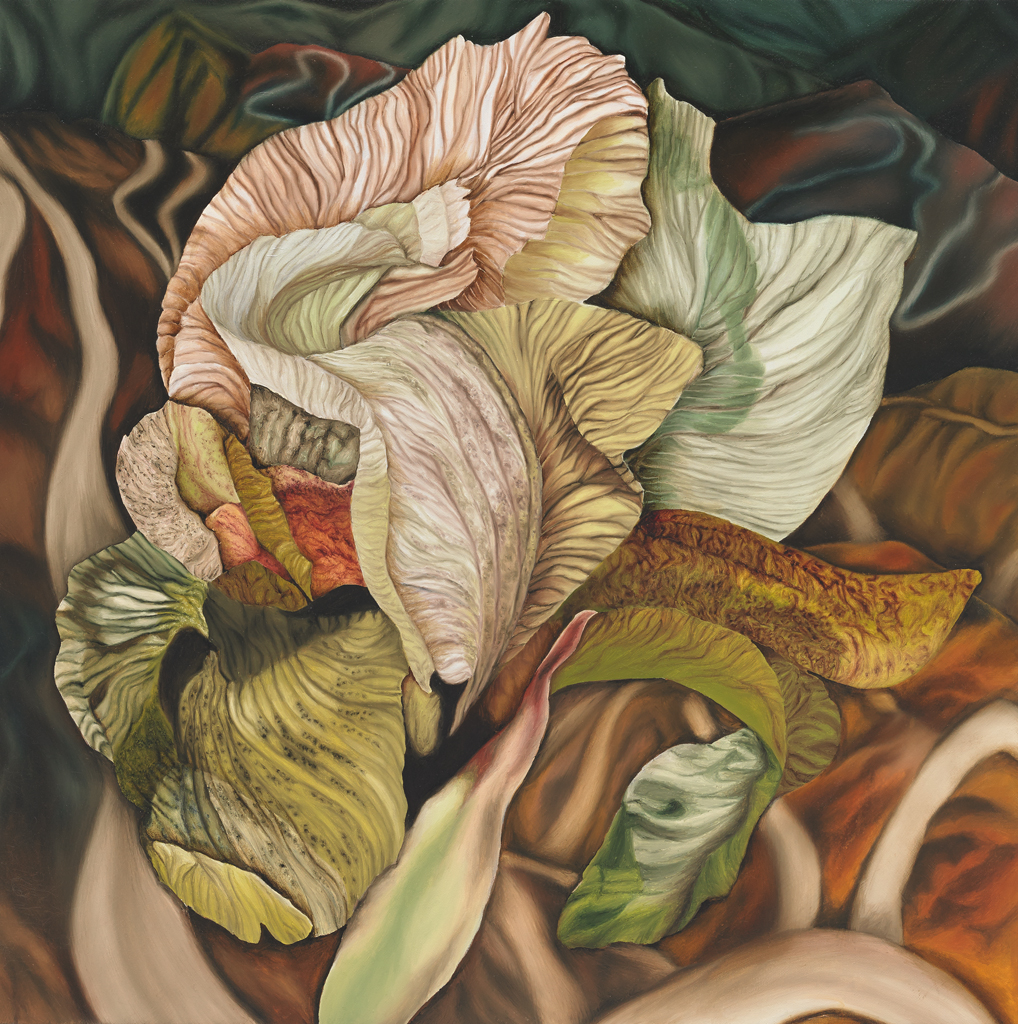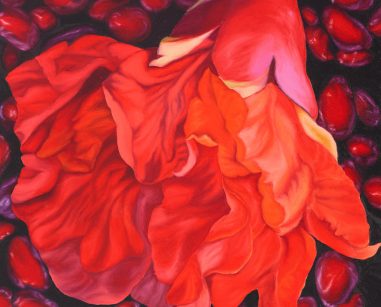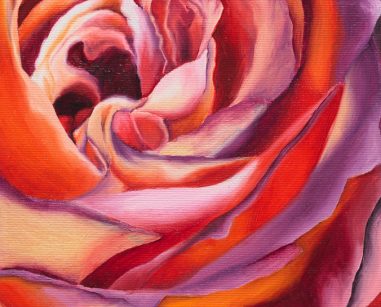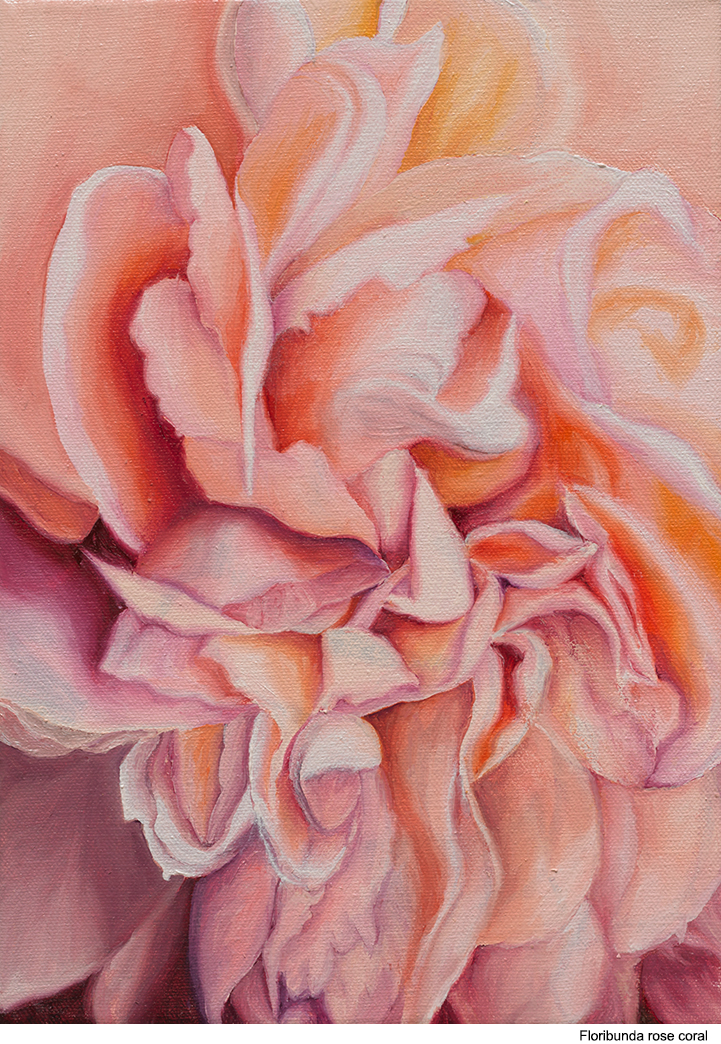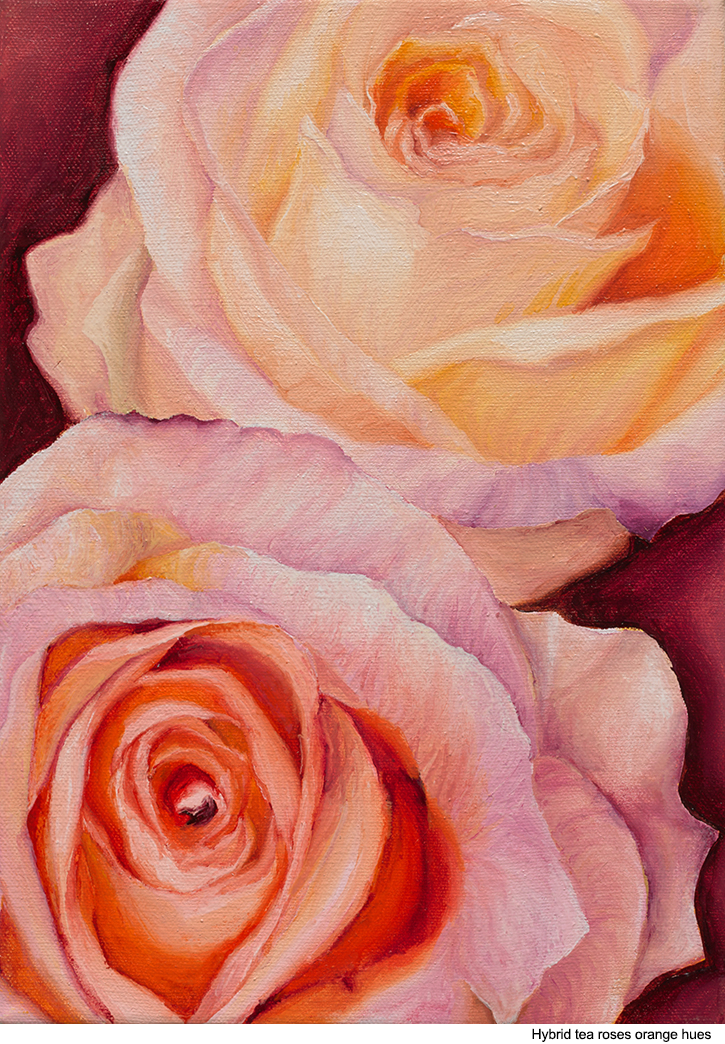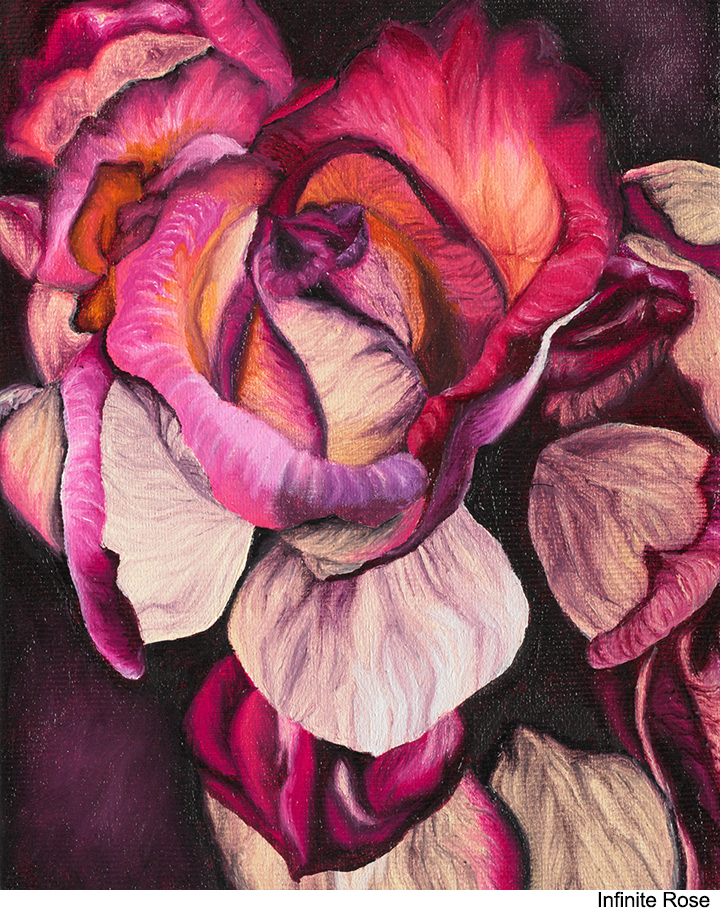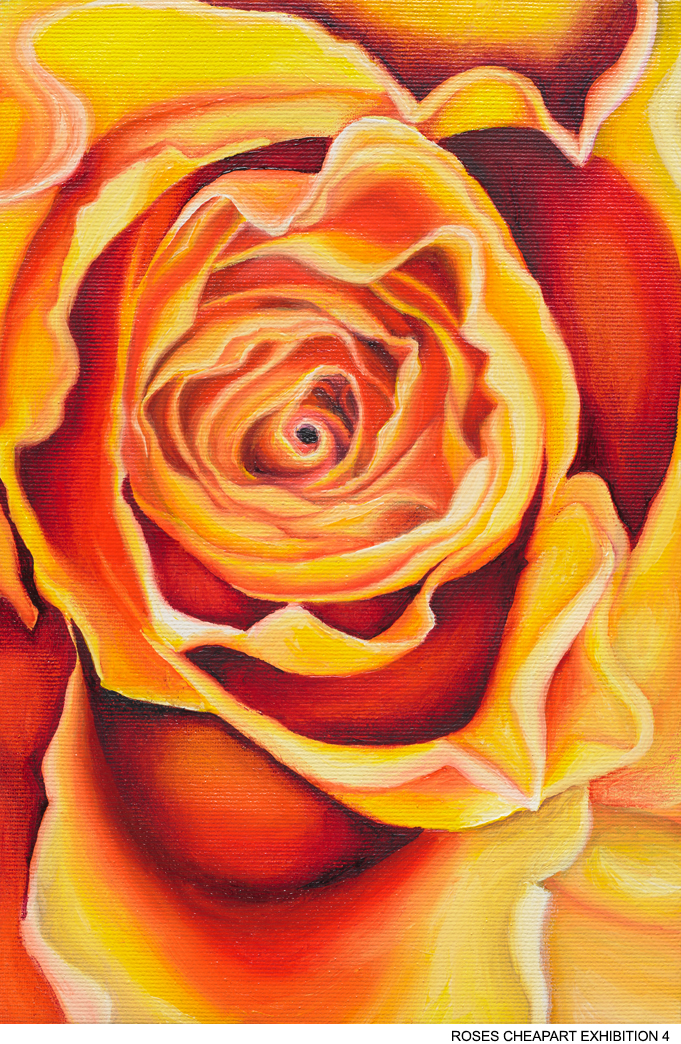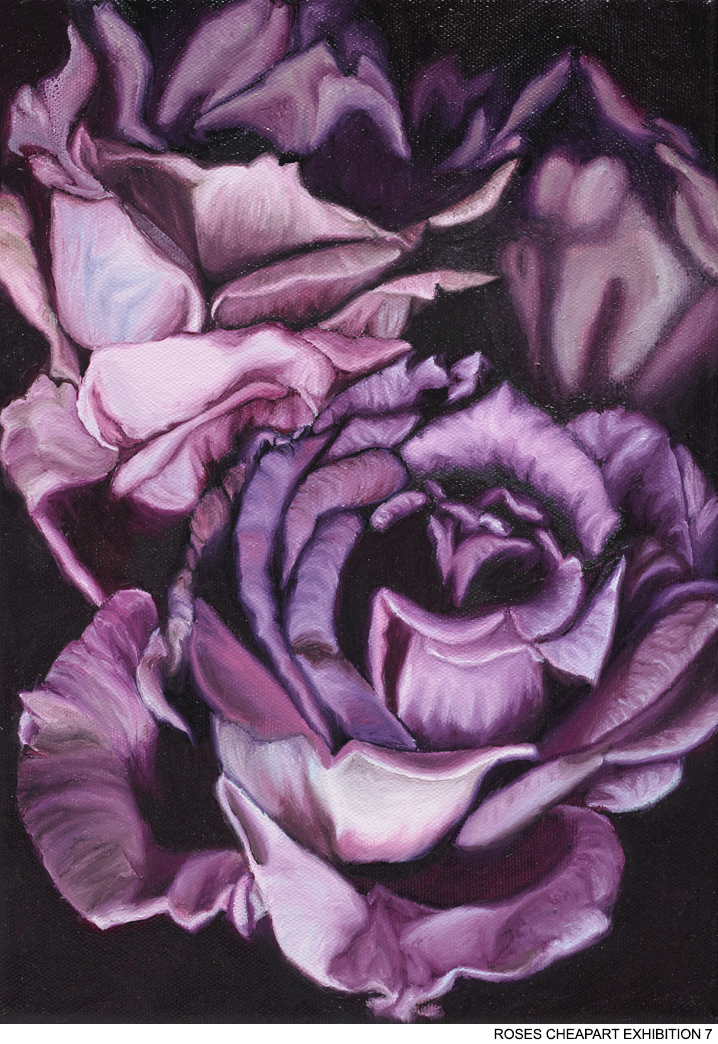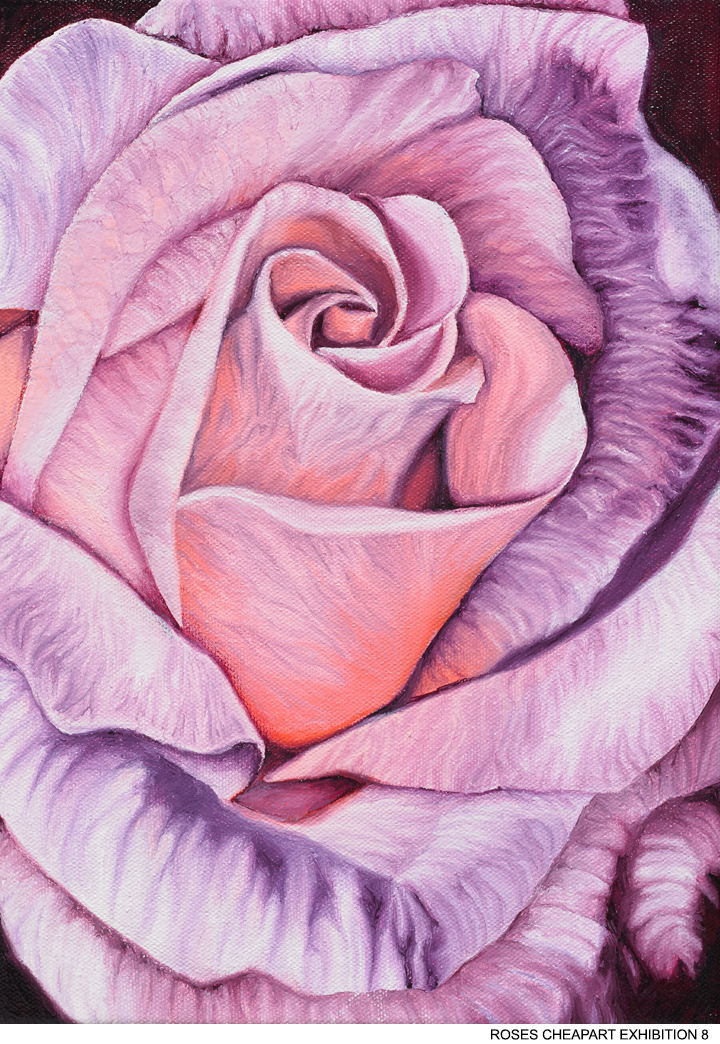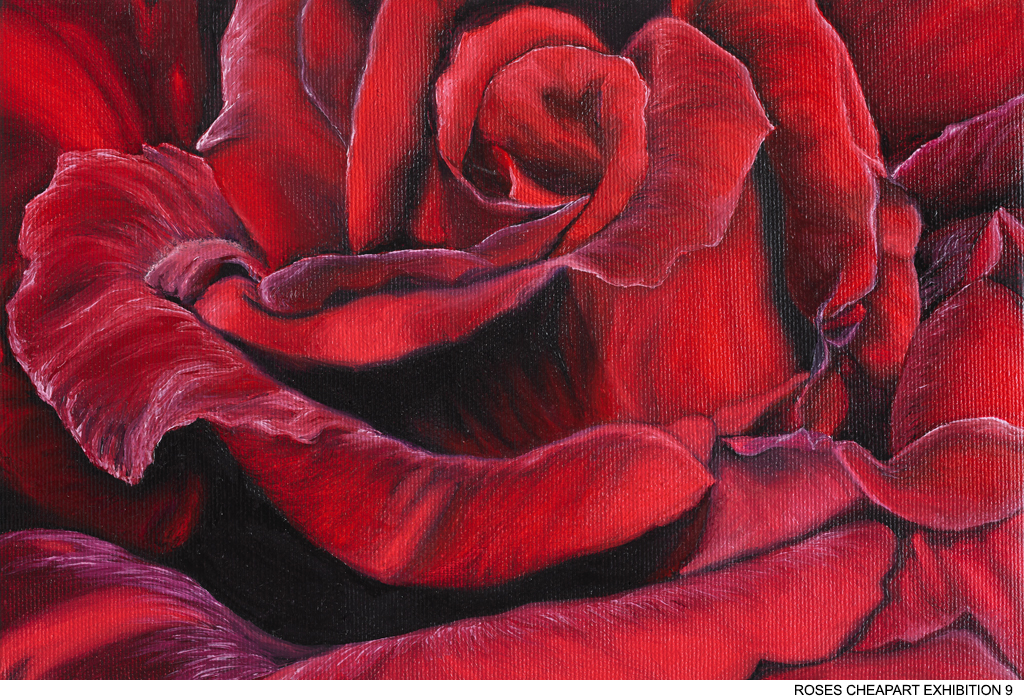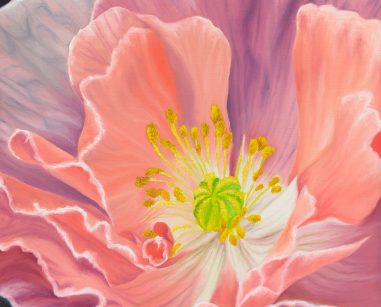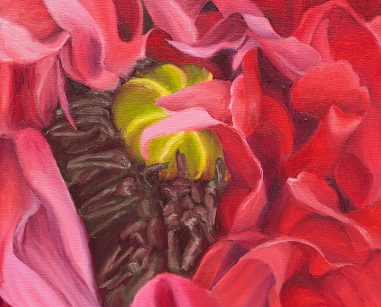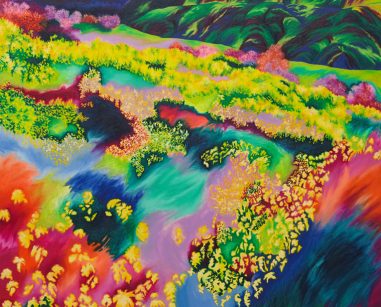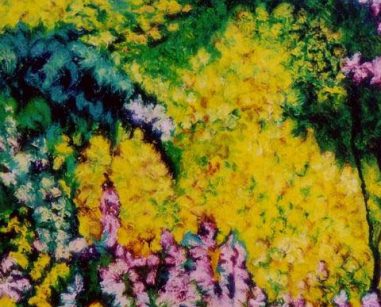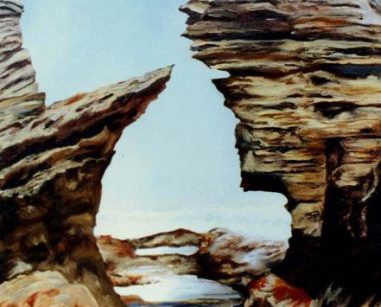Georgia Michaelide Saad
Nature has been the primary inspiration for my work for many years. In our contemporary existence, when nature is continuously threatened with destruction, it is vitally important that we respect our connection to the natural world and that we allow nature to extend and renew our experience of the world, instead of focusing solely on anthropocentric concerns.
I originally worked with landscape representations in which I used the form of the fragment ( the paintings are interpretations of fragments of nature ). The fragment , however , relates at the same time to a larger , transcendent reality which gives unity and coherence to the fragments.
In my previous work the idea of transcendence was central. Transcendence has a long history, and it is connected to theories about the sublime as expressed in the work of philosophers such as Edmund Burke, Immanuel Kant, Jean-François Lyotard and Jacques Derrida, to name a few. Their ideas about the sublime, however, considering that they belong to different time periods and worldviews, differ from each other. The concept of transcendence may have been of primary importance to the aesthetics of Romanticism but in contemporary times an instinctive feeling for the transcendent is very rare. As a result of secularism, together with increasing global awareness and media sophistication, we seem less inclined to accept any kind of experience which cannot be perceived solely by our senses and we are very skeptical of concepts such as transcendence. Postmodern culture differs from Romanticism, in its skeptical attitude to overarching master concepts, such as nature, reason, or the divine.
In relation to my work, I understand transcendence to be something which arises whenever we, as subjects, become aware of a dimension of experience which is not exclusively based on the sensory. I attempt to evoke this dimension of experience through my representations of nature.
In my previous paintings I had been exploring natural forms, in particular, close-ups of flowers and I used fragments of flowers to imply that they had been severed from a greater whole. Fragments may be understood as something which is damaged, less than whole, incomplete. In my paintings, however, I used the fragments to indicate that they related to a larger, transcendent reality which gave them unity and coherence. To quote David Morgan, “transcendence posits a mystery present in the work of art as the encounter with a metaphysical order beyond or hidden within the ordinary, sensuous world”. (David Morgan, “Secret Wisdom and Self-Effacement: The Spiritual in the Modern Age”, in, Negotiating Rapture: The Power of Art to Transform Lives. Chicago: Museum of Contemporary Art, 1996) In my paintings of flowers, my intention was to expose the secret, and transcendent, world which hides behind ordinary reality. I painted the flowers enlarged and in great detail, so as to communicate the feeling of awe and mystery which I experience before even the minutest forms of nature. Flowers to me are representative of the microcosm in relation to the macrocosm, the finite as expressive of the infinite.
The concept of a transcendent reality, as discovered in nature has been expressed in the work of the Romantic painters, such as, for example, Caspar David Friedrich and John Constable, in the work of Vincent van Gogh, and in the paintings of Georgia O’Keeffe but, even though I share an affinity with their views, my paintings (except for the work of Georgia O’Keeffe) do not bear a formal resemblance to their work.
Flowers, however, are also associated with a long-standing tradition which connects them to female sexuality, and the flowers which I have mostly used resemble in form the female genitalia.
I use traditional materials such as oil paints , brushes and canvas , as I find them suitable to my method of working and I consider them to belong to the craft of painting which is of primary concern to me.
My paintings are ultimately expressive of my attempts to find unity and continuity in a contemporary experience which is characterized by flux and relativity.
Georgia Michaelides Saad


